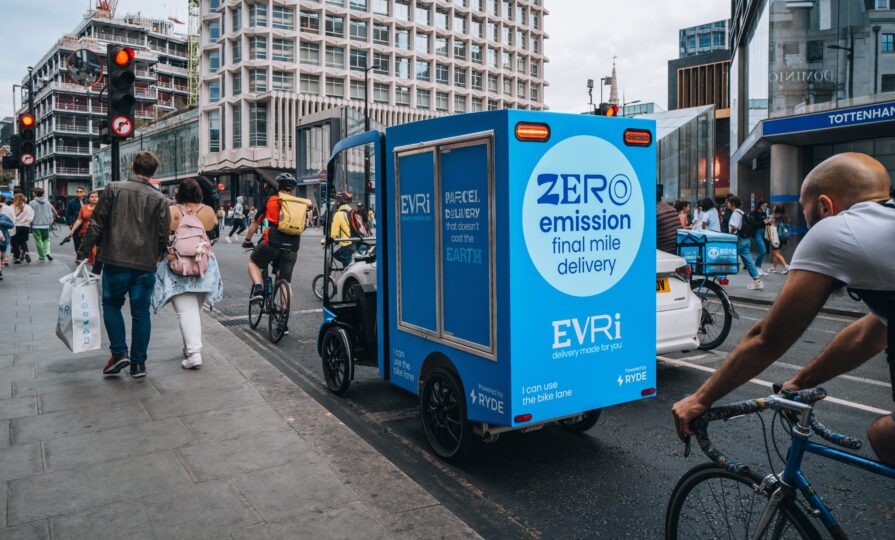Retail rebrand: Is it time to make the change?
Retail Sector lays out the pros and cons of rebranding your business and the best way to go about making sure your rebrand is a success

Register to get 1 free article
Reveal the article below by registering for our email newsletter.
Want unlimited access? View Plans
Already have an account? Sign in
In a hyper-competitive and ever-evolving retail market standing out is key. You must have a strong brand and brand identity to cut through the noise and make an impact on consumers. Sometimes the best way to do this is to rethink your branding. However, this comes with potential drawbacks.
Pros of a rebrand
The first stage of a rebrand is to revisit the existing look and messaging of your brand. The most important thing to do is to understand why you are trying to rebrand. Is it to modernise your brand, attract a new audience to your products or to revitalise an ailing brand.
Modernising a brand can help it feel fresh and relevant. This can attract younger audiences which may not have considered your brand before or may have seen it as outdated. Refreshing your brand can change narratives around it and allow you to put distance between any negative or outdated perceptions. It can also allow you to adopt new values which better align with the current thinking of your company or your intended audience.
Furthermore, a new look offers your brand the chance to make itself stand out in the crowded marketplace. It will garner a lot of attention and media coverage which can be beneficial to your brand both on the balance sheet and in the cultural zeitgeist. A fresh brand often draws curiosity and foot traffic, leading to a potential sales boost. Rebranding can renew interest among existing customers while attracting new ones. It can also secure long term relationships between the brand and the customer if done right.
How to approach a rebrand?
The most important thing to consider when embarking on a rebrand is what is the intended result of the rebrand. By doing this you will give yourself a way to measure its success. Goals can range from increasing profits to increasing market share or increasing customer retention.
To successfully complete a rebrand you must do a lot of market research. You should try to gain insights from a number of stakeholders when considering the approach to take. You should send surveys to customers to learn what they think about your brand. You should engage staff in the process to help offer a different perspective. You should also take a look at your competitors to see what is good about their brand’s and what you think you can do better than them.
The most important thing is to establish a brand identity, one or a few specific things your brand is known for. For example, Currys is known for electricals while Levi’s is known for jeans, both examples of strong branding. To have strong branding you should identify new visual elements, brand voice, and messaging that represent your desired direction. You must also ensure that this remains consistent across a number of touch points. Your identity and messaging should remain the same whether in-store, online or in advertising.
Cons of a retail rebrand
However, any rebrand comes with risk. For one, you could alienate long-time customers who identify with the old brand particularly if the new brand direction diverges significantly from previous values or aesthetics. This could be of particular concern to any brand that is looking to attract a younger audience. This may make older customers feel unwanted or left behind.
A rebrand can also be fraught with confusion and uncertainty if not clearly communicated. Therefore you must be able to communicate why you are choosing to rebrand and you must ensure the consistent messaging that was mentioned earlier. A poorly communicated rebrand can create confusion, leaving loyal customers unsure of what the brand represents.
In a more practical sense, a rebrand comes with costs. From graphic design, to marketing campaigns to changing the branding on all your products, these do not come cheap. Therefore, if the rebrand does not significantly shift the dial in terms of revenues or market share then you may be left wondering what the point was. Furthermore, implementing changes across multiple locations or updating product packaging can lead to operational disruptions and associated costs which can hurt you in the short-term.
Lastly, if a rebrand is not well received it can draw negative attention from both the media and customers alike. This can have long-lasting effects on your business and potentially be terminal. A bad rebrand can put a customer off your brand for life. Brand trust is tough to gain and easy to lose.
How to know when it’s time to rebrand?
There are a number of things that can happen to a brand which could lead to a rebrand. One of these could be when you expand your brand or if you add new products to your range, particularly if they are distinct from your previous offering. Expanding your business should ideally be accompanied by a brand that reflects the broadened scope. You should assess whether your current branding accurately reflects your new offerings. Alongside this, if you merge with or acquire a new company you could look to rebrand to align with a new vision.
Furthermore, you may look to rebrand if there is a negative perception of your current brand. By doing this you can try to make a clean break from your old ways and hope to improve your brand in the eyes of the consumer. For example, when delivery company Hermes rebranded to Evri in an attempt to shake the bad press attached to the Hermes brand.







